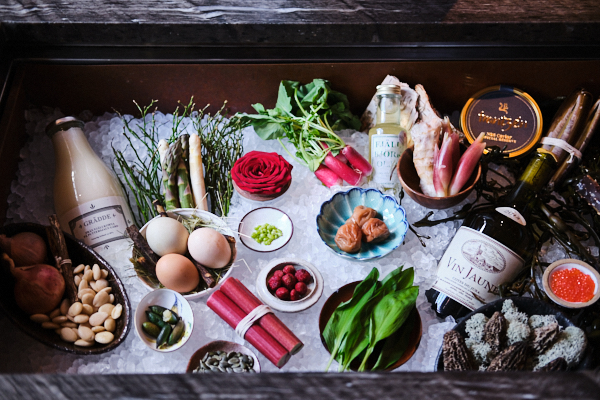How To Make Korean Kimchi
I recently attended a kimchi class hosted by the executive chef Mr. Lee of multiple Korean restaurant chains in Hong Kong including BBQ 7080, Norayo K-Cafe and Apgujeong Tent Bar! The class was held at the BBQ Military restaurant in Tsuen Wan and Mr. Lee spoke to us in Korean while his colleagues translated for him. The informative class made me realize just how much time and ingredients go into making this spicy Korean appetizer so read on to find out how to make kimchi!

Ingredients:
Napa Cabbage (3kg)
Daikon Radish (900g)
Scallion (150g)
Chili Pepper (70g)
Shrimp Paste (50g)
Fish Sauce (150g)
Chopped Ginger (10g)
Chopped Garlic (50g)
Salt (10g)
Sugar Syrup (20g)
Oyster (100g)



After 5 hours, the cabbage should look something like this and after washing the salt off, we are ready to start working on the seasoning paste.

The first step in making the seasoning paste is to chop all the dry ingredients into thin slices which include apple, pear, daikon radish, scallion, and optional pine nuts and chestnuts. Then toss in all the seasoning ingredients including chili pepper, shrimp paste, fish sauce, chopped ginger, chopped garlic, sugar syrup and oyster, and mix thoroughly until you get something that looks like this. The last thing that Mr. Lee added in for us was a cup of hot porridge which was combined thoroughly with the mixture as well.

Once you let the mixture set overnight, you should get something like the wet paste below and you are ready to marinate the cabbage.

Similar to the salt, the key is to get the seasoning paste into every little nooks and crannies of the cabbage so every part of it is well-seasoned. Be generous with the paste and you are almost done!

Pack the cabbage into a container that can be sealed tight and let it ferment at room temperature for 3-4 days before putting it in the refrigerator to slow down the fermentation process which would prevent it from getting too sour. We were told that is is best to eat the kimchi within a month since no preservatives were used in the making.

Ta-da! My very own kimchi!

Enjoy!
Follow me on Facebook: supertastermel
Follow me on Instagram @supertastermel






Comments
Post a Comment